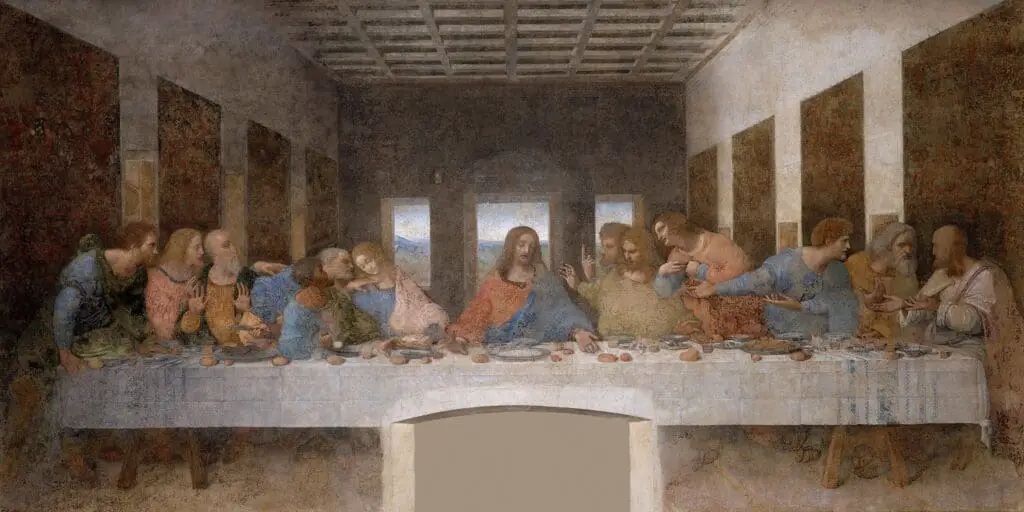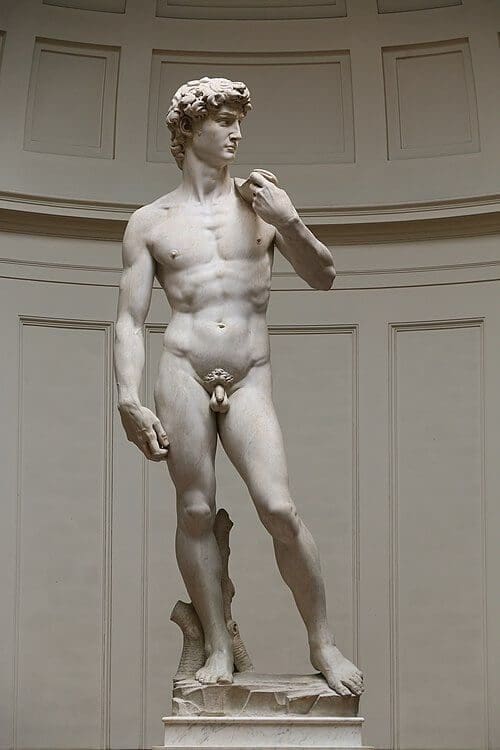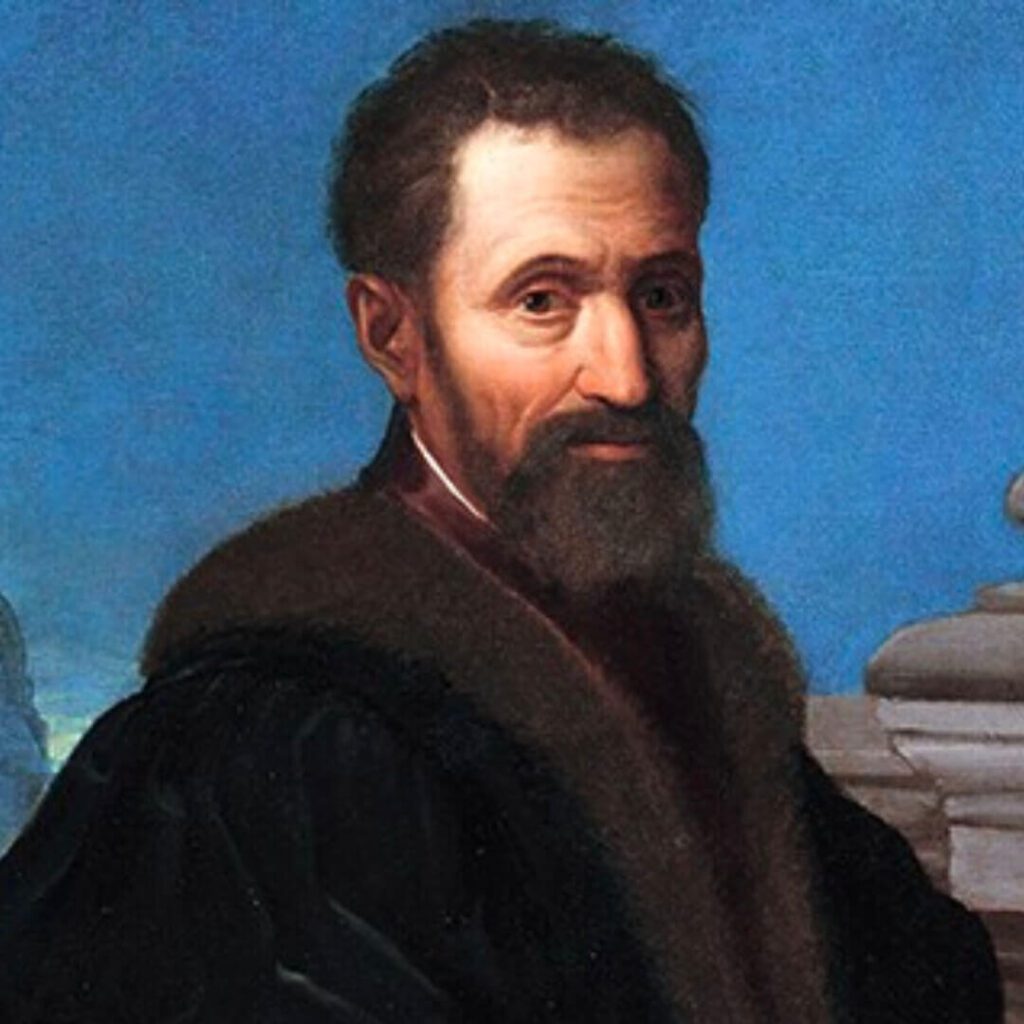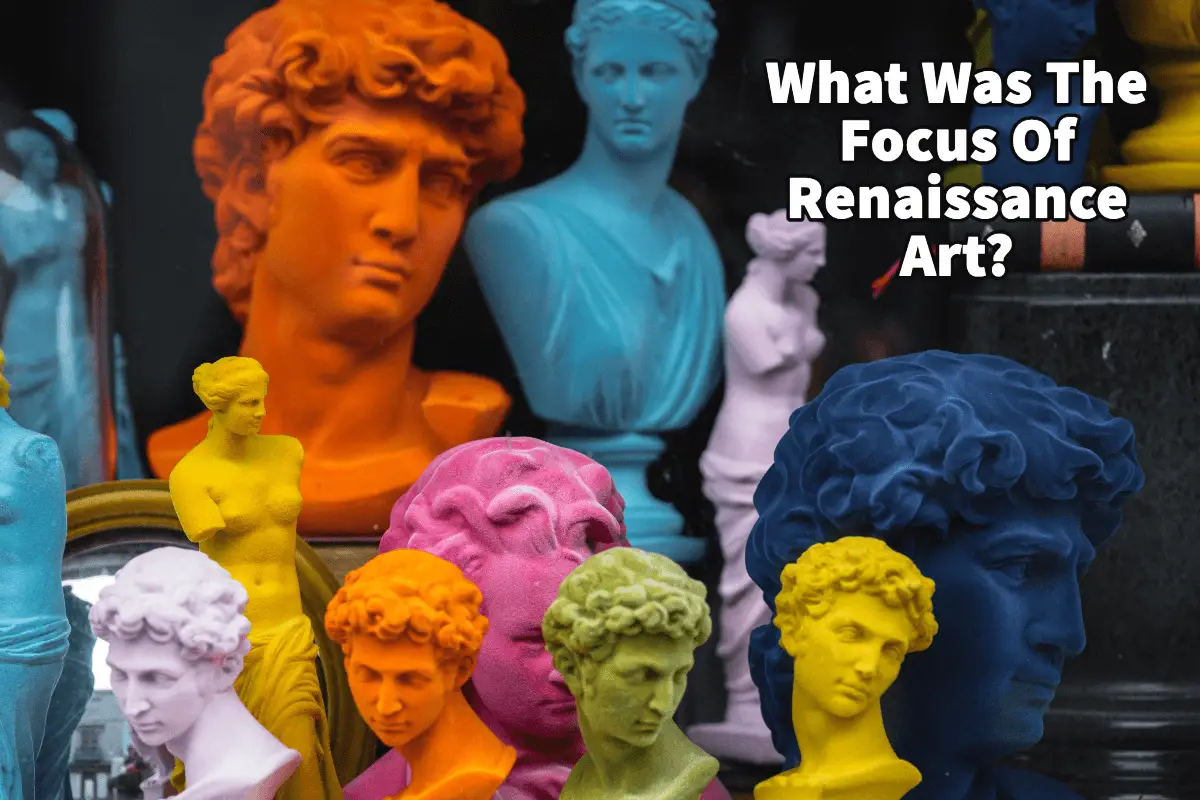The Renaissance was considered a period of rebirth for the arts, science, and culture in Europe. The Renaissance originated in Italy.
Renaissance art focused on the classics of Greece and Rome, humanist philosophy, and the study of the human figure. Realism was also an essential part of Renaissance art. The great artists of the Renaissance also became great anatomists and studied human beings.
Table of Contents
- Exploring the Core Themes of Renaissance Art
- Renaissance Revelations: The Dawn of Artistic Awakening
- Frequently Asked Questions
- Frequently Asked Questions
- Related Questions
Exploring the Core Themes of Renaissance Art
Marking an era of profound cultural and artistic revival, the Renaissance represented a significant turning point in European history, with its roots deeply planted in Italy. Renaissance art was characterized by a profound engagement with the classical ideals of ancient Greece and Rome, intertwined with the principles of humanist philosophy.
This era strongly emphasized the accurate depiction and study of the human form, driving artists to become adept anatomists. Realism emerged as a fundamental element as artists sought to capture the essence of the physical and natural world with unprecedented detail and accuracy.
Renaissance And Art
Even though the Renaissance affected all areas of society, art is one of the areas of the Renaissance most widely known. Renaissance art includes painting, sculpture, architecture, music, and literature produced in Europe’s 14th, 15th, and 16th centuries.
For Renaissance art, the focus was on the awareness of nature, a revival in classical learning such as the Greek and Roman periods, and a more realistic view of man. Renaissance art also emphasizes the human form and the human body.
Renaissance Art And Humanism
The Renaissance included what many said was the evolution of humanism and a new way of thinking. The humanist thinking of the Renaissance was about men being able to master nature rather than just developing religious piety.
You must remember that during this time of the Renaissance, the church, particularly the Catholic Church, controlled everything. Religion and state were not separated, and the church expected blind obedience.
The Renaissance brought a new way of thinking that humans could make their own decisions rather than just following the rules set forth by the Catholic Church or what was also known as God’s plan.
The Renaissance people remained religious, but God gave humans opportunities. They believed it was the duty of all human beings to do their best and strive to be moral beings and not just be blindly led by a Church.
One of the reasons the artist turned so heavily to inspiration from the Greeks and Romans included sculpture, paintings, and decorative arts. Both Classical and Renaissance art focus on human beauty and nature.
When shown in these religious works, human beings were depicted as living, breathing beings showing emotion. Added to this was the Renaissance art that depicted light and shadow techniques, making the paintings look more three-dimensional and realistic.

Leonardo da Vinci’s painting The Last Supper is a great example of a Classical Renaissance piece that showed emotion. Leonardo da Vinci painted each of the apostles at the exact moment when Christ told him that one of them would betray him.
The Last Supper painting is an excellent example of Renaissance humanism in that he showed the emotion and the human side of each of the apostles. He led the apostles as living and breathing human beings who may have some flaws.
In particular, Judas clutched the purse with the coins he received because of the betrayal of Jesus. The bag symbolizes the coins Judas received betraying Jesus.
At the same time, The Last Supper painting by Leonardo da Vinci was a master and used the light to get his point across. In this painting, the window’s light shines behind Christ’s head.
Leonardo da Vinci did not show Christ with a crown or halo on his head and instead portrayed him as human. Showing Christ as a human being was very different from many other paintings of the day, where Christ would have a halo on his head and not be shown as a human being.
Renaissance Art And Greek And Roman Classics
Classical art heavily influenced Renaissance art, especially in Greece and Rome. With the Renaissance artists, you can see their inspiration from Greek and Roman sculpture, painting, and decorative art.

Perhaps no other piece of Renaissance culture shows this more than David by Michelangelo. This sculpture is considered to be a masterpiece of the Renaissance era.
The statue of David stands 517 cm or 17 feet tall. It is based on the biblical David and Goliath story figure, a favorite subject of many Renaissance artists in Florence.
One thing that makes the statue unique is the pose and how David stands. Most people believe that David was depicted just before his battle with Goliath. David looks intense and ready for the war and ready to fight Goliath.
The statue is a Renaissance interpretation of a standard ancient Greek theme of having the heroic male nude. And the figure shows Classical Greek themes in how David is posing.
The David statue shows us the Renaissance’s influence in using Greek and Roman classics inspiration.
Renaissance Art And The Human Figure
The human figure or body was also significant to the Renaissance artist. This also went back to their influence on Greek and Roman art.
Renaissance artists like Leonardo Vinci also became anatomists as they attempted to refine and make more life-like sculptures or paintings of the human form. Leonardo da Vinci was known to dissect at least 30 human bodies to study better and understand the workings of the human body.

Leonardo da Vinci and Michelangelo became experts in the human body and the studying and portraying the human figure. Patrons who were commissioning the art also came to expect anatomical mastery.

In other words, to be considered a master of Renaissance art, you also needed to be a master of the human body; this is what was expected during this time.
Undoubtedly, Leonardo da Vinci receives credit for being the most significant artist anatomist of all time. He took so many detailed studies of the human body that he had very little time to paint and do his art. But because of this and the notebooks that he left, we are given some beautiful details of the human body.
Renaissance art is such an essential era of art because it helped change the direction of art as we know it today. Since then, it can be said that artists built upon all of the things that the Renaissance artists brought to art.
We are in debt to these Rensassice artists and their beautiful works of art.
Renaissance Revelations: The Dawn of Artistic Awakening
The Renaissance, often hailed as the rebirth of culture and knowledge, was a transformative epoch that bridged the Middle Ages and the Modern era. Rooted in Italy in the 14th century and unfurling its wings into the 17th century, the Renaissance heralded monumental shifts in art, thought, science, and society.
As we journey back, let’s unravel twelve pivotal reasons that spotlight the Renaissance’s monumental significance in the realm of art and artistic movements:
- Rebirth of Classical Ideals: The Renaissance revived Greco-Roman art, literature, and knowledge, influencing artists to adopt classical styles, techniques, and subjects.
- Humanism: There was a renewed focus on human experience, emotion, and anatomy. Art began celebrating the individual, leading to more lifelike, three-dimensional figures and portraits.
- Perspective and Depth: Artists like Brunelleschi pioneered linear perspective, introducing a sense of depth and three-dimensionality to two-dimensional canvases.
- Chiaroscuro: The use of light and shadow, known as chiaroscuro, became prominent, allowing artists like Caravaggio to add drama and realism to their works.
- Prolific Patrons: The Medici family, the Vatican, and other affluent patrons funded artists, ensuring a steady stream of magnificent artworks and fostering a competitive yet collaborative art scene.
- Artistic Titans: The Renaissance boasted a pantheon of legendary artists like Leonardo da Vinci, Michelangelo, Raphael, and Titian, each of whom pushed artistic boundaries and set new standards.
- Technological Advancements: The invention of oil paints allowed for richer colors, subtle shading, and longer working times, revolutionizing painting techniques.
- Diverse Mediums: Apart from paintings, the Renaissance celebrated sculptures, frescoes, and architectural wonders, leading to a holistic evolution in various art forms.
- Scientific Exploration: There was a synergy between art and science. For instance, Da Vinci’s anatomical sketches showcased a blend of artistic skill and scientific curiosity.
- Spread of Knowledge: The invention of the printing press by Gutenberg meant that artistic techniques, discoveries, and philosophies could be disseminated widely, influencing a broader spectrum of artists and thinkers.
- Shift in Themes: While religious themes remained prevalent, there was a surge in mythological, historical, and secular subjects, reflecting the diverse interests of the period.
- Foundation for Future Movements: The artistic innovations of the Renaissance laid the groundwork for subsequent movements like Baroque, Rococo, and Neoclassicism.
With its swirl of colors, ideas, and innovations, the Renaissance reshaped the artistic landscape, setting the stage for centuries of creativity. It was an era where art and intellect danced together, forever transforming how we perceive, appreciate, and create art.
Frequently Asked Questions
What is the Renaissance, and how did it impact the arts in Europe?
The Renaissance was a cultural and intellectual movement that emerged in Europe during the 14th to 17th centuries. It had a profound impact on various fields, including the arts, by promoting a revival of classical ideas and values.
Why did Renaissance art place a strong emphasis on the classics of Greece and Rome?
Renaissance artists admired the art and philosophy of ancient Greece and Rome for their emphasis on beauty, proportion, and the celebration of the human form. This admiration led to a renewed interest in classical themes and subjects.
How did humanist philosophy influence Renaissance art?
Humanist philosophy, which emphasized the study of classical texts and human potential, played a pivotal role in shaping Renaissance art. Artists sought inspiration from human experiences, emotions, and the exploration of individualism.
Why did Renaissance artists become anatomists and study the human figure?
Renaissance artists believed that a deep understanding of anatomy was crucial for creating realistic and lifelike depictions of the human body. This commitment to accuracy in representation contributed to the remarkable realism seen in Renaissance art.
What role did realism play in Renaissance art?
Realism was a key characteristic of Renaissance art, focusing on accurate representation and portrayal of subjects. Artists strived to capture the natural world and human experiences with meticulous attention to detail.
Who were some of the notable artists of the Renaissance, and what were their contributions?
Artists such as Leonardo da Vinci, Michelangelo, Raphael, and Donatello were prominent figures of the Renaissance. They made significant contributions to painting, sculpture, and other artistic forms, influencing the course of art history.
How did the Renaissance impact the portrayal of religious themes in art?
While religious themes remained prevalent, the Renaissance brought a new approach to their depiction. Artists combined religious subjects with elements of humanism and realism, creating emotionally expressive and more relatable religious scenes.
What artistic techniques were developed or refined during the Renaissance?
The Renaissance saw the development of various artistic techniques, including linear perspective, chiaroscuro (light and shadow), and sfumato (blurring of outlines). These techniques added depth, realism, and drama to artworks.
Did Renaissance art only focus on traditional mediums like painting and sculpture?
While painting and sculpture were dominant, the Renaissance also witnessed advancements in other artistic forms, including architecture, literature, music, and printmaking. Artists explored new mediums to express their ideas and creativity.
How did the geographic origin of the Renaissance, particularly in Italy, influence the themes and styles of Renaissance art?
Italy, as the birthplace of the Renaissance, had a profound influence on the themes and styles of Renaissance art. The rich cultural heritage, classical ruins, and patronage from wealthy families in Italian city-states contributed to the flourishing of artistic innovation and expression.
Anita Louise Art is dedicated to art education, great artists, and inspiring others to find and create their art. We love art that uplifts and inspires. #ArtToMakeYouSmile! #ArtToMakeYouHappy!
If you are interested in seeing any of my art, you can find out more by clicking here. If you are interested in what inspires me and my paintings, you can discover more by clicking here.
We have a free newsletter and would love you to be part of our community; you can subscribe to the newsletter by clicking here. If you have any questions, I would be happy to talk to you. You can reach me, Anita, by clicking here.
Subscribe to our Anita Louise Art YouTube Channel filled with great videos and information by clicking here.
Join us for our podcast “5 Minutes With Art.” Spend just 5 minutes a week with us to discover and learn about great art and artists. You can find out more about our podcast by clicking here.
Frequently Asked Questions
What was the main focus of the Renaissance?
The main focus of the Renaissance was a renewed interest in classical learning, humanism, and individualism, which manifested in art, literature, philosophy, and science
What did Renaissance art focus on
Renaissance art focused on realism, perspective, and a wider range of subject matter than had been explored in earlier periods, including mythology, ancient history, and portraits
What did the Renaissance period focus on
The Renaissance period focused on a broad range of cultural and intellectual pursuits, including art, literature, science, philosophy, and politics.
How did the focus of the Renaissance differ from earlier periods of European history?
The focus of the Renaissance differed from earlier periods in that it was characterized by a renewed interest in classical learning, a greater emphasis on individualism, and a more secular worldview.
What impact did the focus of the Renaissance have on art?
The focus of the Renaissance on realism, perspective, and a wider range of subject matter helped to revolutionize the way art was produced and perceived, setting the stage for new artistic movements in the centuries that followed.
What were some of the key themes explored in Renaissance art?
Renaissance art explored a wide range of themes, including religious and mythological subjects, portraits of important figures, and scenes from everyday life.
How did the focus of the Renaissance impact literature and philosophy?
The focus of the Renaissance on humanism and individualism helped to inspire new literary and philosophical movements, which emphasized the importance of the individual and the power of human reason.
What role did the Medici family play in the focus of the Renaissance?
The Medici family, a wealthy and influential family from Florence, played a significant role in supporting the arts and sciences during the Renaissance, helping to establish Florence as a major cultural center.
How did the focus of the Renaissance impact politics and society?
The focus of the Renaissance on individualism and humanism helped to shape new political and social movements, such as the rise of republican forms of government and the growth of the middle class.
How did the focus of the Renaissance impact the development of art and culture outside of Europe?
The focus of the Renaissance had a profound impact on the development of art and culture in other parts of the world, inspiring new artistic movements and intellectual traditions in places such as Asia and the Americas.
What lasting impact did the focus of the Renaissance have on the course of human history?
The focus of the Renaissance had a profound and lasting impact on the course of human history, inspiring new artistic and intellectual movements and shaping the way people thought about themselves, their world, and their place in it.
Related Questions
What Did Leonardo da Vinci Contribute To The Renaissance?
Leonardo da Vinci made many contributions to the Renaissance in art, science, engineering, medicine, and architecture. He was a keen observer who wrote down a lot of what he discovered in his notebooks. His artistic techniques changed how artists painted and influenced many other Renaissance artists.
By clicking here, you can learn more by reading What Did Leonardo da Vinci Contribute To The Renaissance?.
Was Leonardo da Vinci A Philosopher?
Leonardo da Vinci was a philosopher; being a philosopher means that you want to seek wisdom. Leonardo was one person who wanted to seek wisdom or enlightenment in his life. Leonardo was an active observer and learner of the human body, human behavior, and nature.
By clicking here, you can learn more by reading Was Leonardo da Vinci A Philosopher?.


